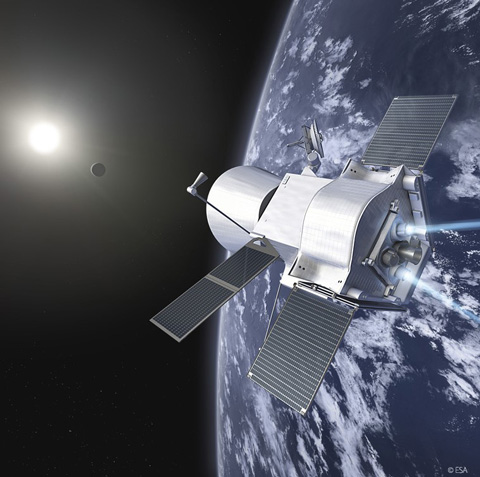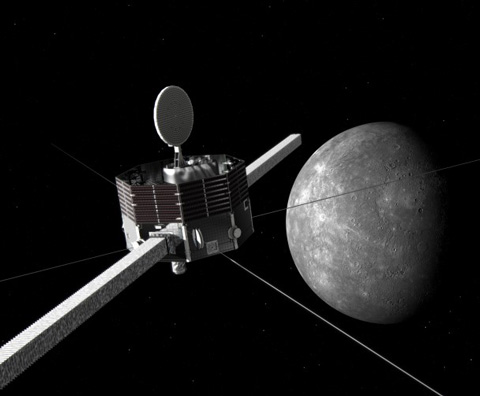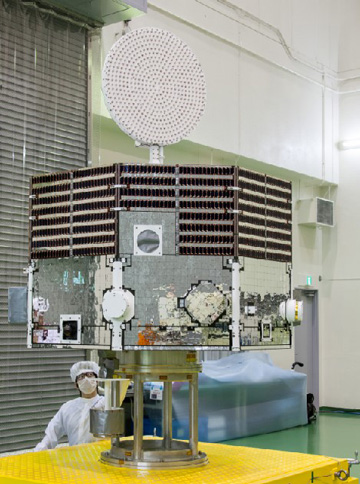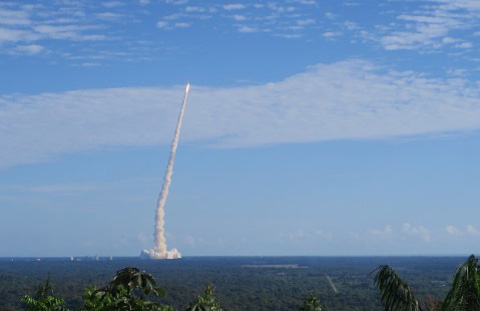News
Japan's First Mercury Probe to be Launched with European Probe: the 7-Year Journey to Unravel Many Mysteries Updated in December 2018
The closest planet to the Sun, Mercury is still covered in mystery because strong solar rays and ultra-high temperature hinder humans from approaching the planet. Following two previous expeditions by American spacecrafts, Japan's first Mercury probe MMO (Mercury Magnetospheric Orbiter) is going to be launched from the French territory Guiana, together with the European Space Agency's (ESA) probe MPO (Mercury Planetary Orbiter) on October 20. It took 21 years for the initial plan to materialize. The long seven-year journey to Mercury will began.
According to Japan Space Exploration Agency (JAXA), MMO and MPO, are combined to be launched together and are scheduled to be launched from Guiana's space port in Kurou. The two probes will be launched by the French Arian 5 Rocket. If the weather is fine and preparations are complete, the probes will travel to space at 10:45 a.m. Japan standard on October 20.
MMO is an octagonal column with a height of 2.4 meters and a diameter of 1.8 meters. It weighs 280 kilograms. After the launch, MMO and ESA's MPO will go into repeated “swing-by” around the Earth, Venus and Mercury. By the end of 2025, they will go into orbit around Mercury. After they reach Mercury, the two probes will go their separate ways into different orbits to conduct their year-long missions. Mercury is the smallest planet in the solar system, close to the sun. It is larger than the moon. Its revolution cycle is about 88 day and the radius measures about 2440 kilometers. It is a rocky planet similar to the Earth and is known to have magnetic fields. Mercury also has craters like the moon, but its daytime surface temperature is 430 degrees Celsius, while the night time temperature drops to minus 170 degrees Celsius. This illustrates the planet's harsh environment. The existence of Mercury was known to mankind since BC, but exploration of Mercury was known to be a difficult task. One reason is the intense rays and winds from the sun, requiring advanced thermal measures in building the probe's body. Furthermore, high thrust is needed to place the probe into orbit around Mercury. JAXA's MMO is covered by glass mirrors that reflect light. Between the mirror and the necessary equipment loaded for the mission, insulation is installed abundantly.
Up to now NASA's Mariner 10 (1974-1975) and Messenger (2011-2015) were the only two probes to Mercury. Mariner 10 discovered magnetosphere and magnetic fields on Mercury. Messenger found ice on the north and south poles of the planet. However, origins and details about the planet's unique structure including its huge central nucleus are still unknown. After the two probes reach Mercury, MMO will look into the planet's magnetosphere and magnetic fields, while MPO will observe to reconfirm the planet's surface and the existence of ice. Japan's plan to send a space probe to Mercury began in 1997. Initially it was a national project, but it became a joint-mission with the European partners. From there, the project was named BepiColombo. It is the first Mercury probe project outside of the United States. The name of the project comes from the Italian mathematician/scientist Giuseppe “Bepi” Colombo who contributed greatly to the Mariner 10 mission.
http://www.stp.isas.jaxa.jp/mercury/index-e.html




(Provided by JAXA July 2018; from BepiColombo Mercury Exploration project page - CGS Tayori)







